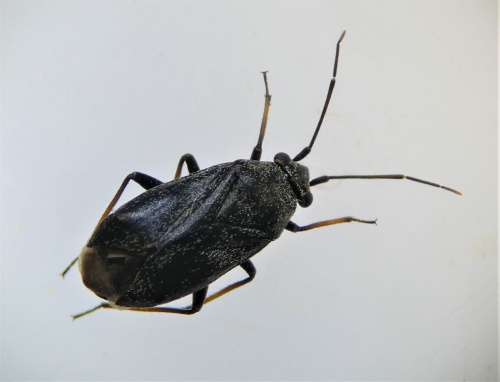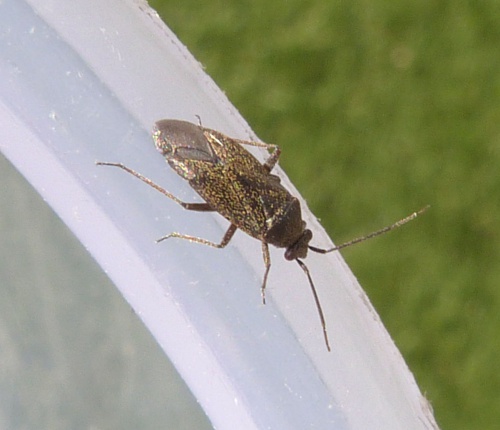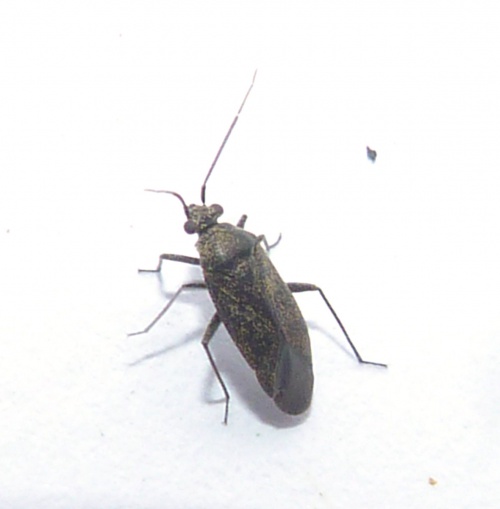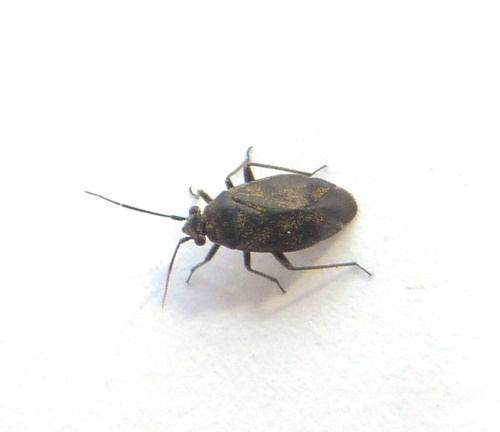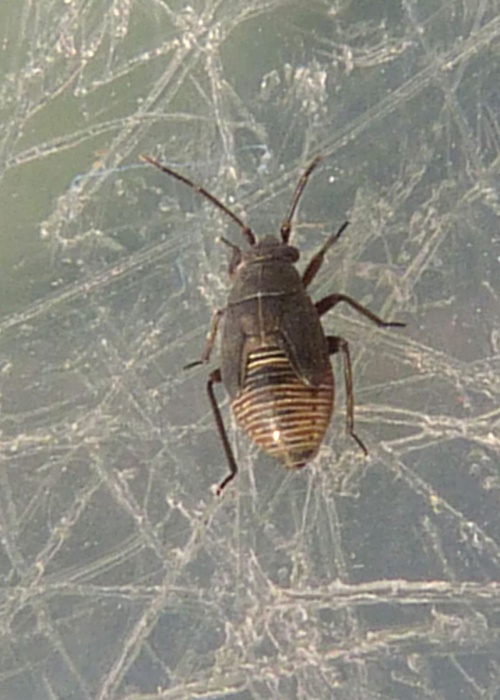Heterocordylus tibialis
A medium-sized (4.5 to 5.5 mm) black mirid bug covered in flattened scale-like pale hairs which may appear golden. There are two very similar species but they use different host plants, and for that reason it is very important to state the host plant on any record for this species. Heterocordylus tibialis is associated with Broom. It can be distinguished by the brownish tibiae and by the width of the 2nd antennal segment, which is only slightly thickened towards the apex.
Heterocordylus genistae is similar but uses Dyer's Greenweed, not Broom.
Unless identified by a recognised expert, a photo is required. If the photo doesn't show the key ID features then in the comments box describe the size and identifying characters you have observed. For this species the host plant must be stated as part of the record.
Usually found on Broom.
Adult: May to July
Nymphs become adult early in the season, although rarely survive beyond mid-summer.
A common bug throughout Britain on Broom, the only host plant.
Status in Leicestershire and Rutland not known.
Leicestershire & Rutland Map
Enter a town or village to see local records
MAP KEY:
Yellow squares = NBN records (all known data)
Coloured circles = NatureSpot records: 2020+ | 2015-2019 | pre-2015
UK Map
Species profile
- Species group:
- Bugs
- Kingdom:
- Animalia
- Order:
- Hemiptera
- Family:
- Miridae
- Records on NatureSpot:
- 3
- First record:
- 23/05/2019 (Calow, Graham)
- Last record:
- 12/07/2023 (Timms, Sue)
Total records by month
% of records within its species group
10km squares with records
The latest images and records displayed below include those awaiting verification checks so we cannot guarantee that every identification is correct. Once accepted, the record displays a green tick.
In the Latest Records section, click on the header to sort A-Z, and again to sort Z-A. Use the header boxes to filter the list.


